This isn’t a question often asked but there is the instance from time to time that I think – Can I eat this Tree?
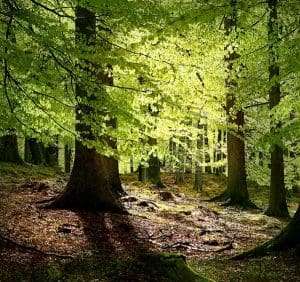
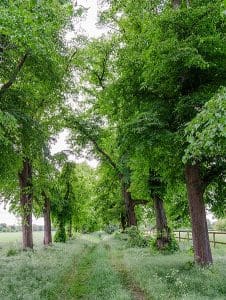
Trees provide us with all sorts of environmental services – as well as just looking nice and making us feel good they can also act as windbreaks, and as screens that reduce noise and pollution from busy roads. They provide us with shade and cool us down in heatwaves. And of course they don’t just exist for our benefit – they are part of the complex web of species that all depend on each other and have done way before us humans came on the scene and started rearranging the landscape.
But did you know many trees are also edible? Of course, like any other type of foraging, you need to remember that there are also many poisonous species and you need to practise identification skills to make sure you’ve got the right one. Also for the sake of your teeth, I wouldn’t recommend just taking a chomp out of the trunk. But read on to find out how to get fed from six very common trees that you can easily find in the UK – and one to avoid.
So, if you are wandering through a park, through a wood or along a hedgerow somewhere and asking yourself… Can I eat those trees?
Cherry – Yes! Both Wild Cherry (link) and the larger flowered ornamental varieties
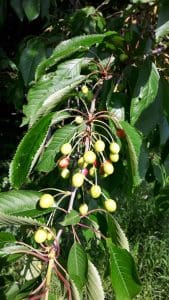
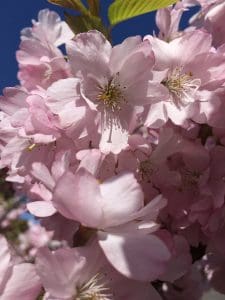
you get in parks and gardens have edible flowers. Basically as long as you can confidently tell it’s some species of cherry, the flowers are safe to have a nibble on. Some taste sweeter than others, almost all will have a slight almondy after taste.
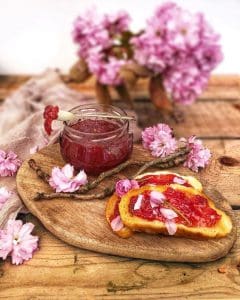
Image from @foragedbyfern
The Ornamental ones don’t usually grow any fruits, but the wild ones do – the wild cherries are usually very sour but sometimes the tree might be a hybrid with a domesticated sweet cherry variety. You’ll just have to try them to see whether its sweet or sour, and decide what recipe to do accordingly. Avoid eating Bird cherry though – the fruits are poisonous unless you process them .
Hawthorn – Yes! The leaves, flowers and fruits (or Haws) are all edible. Its usually the first tree to start bursting into leaf in Spring, and those new tender leaves make an excellent snack. The Flowers taste faintly of almonds, and the haws make an excellent ketchup.

Ash – Yes! The young shoots can be steamed and the seeds can be pickled.
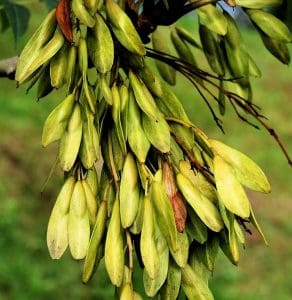
The whole tree contains high levels of tannins, making it all very bitter – but if you process the acorns the right way, they are incredibly nutritious and make a great addition for porridges and stews. Ground down into acorn flour,
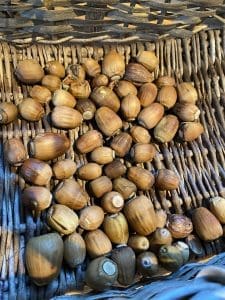
the possibilities for cakes, biscuits and bread are endless – though because acorn flour is gluten free it wont behave the same way as normal wheat flour, so if you want your bread to rise it light be worth mixing a bit of both and experimenting with different proportions,
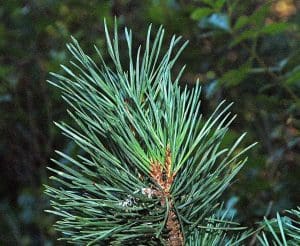
You need to make sure you aren’t confusing this with the poisonous Yew tree, which also has evergreen needles. But its a bit easier to tell the difference with Pine species than with other Christmas tree- looking conifers – The needles of pine species never join onto the twig by themselves. They always have at least one friend attached to them – for Scots pine they join together as a pair, other species in clusters of three or more. As long as the needles aren’t single, it’s going to be a Pine tree, and If It’s Pine, It’s Fine (to safely have a nibble, that is) The needles taste citrusy and make a lovely tea, and can be used to flavour syrups and alcohols. 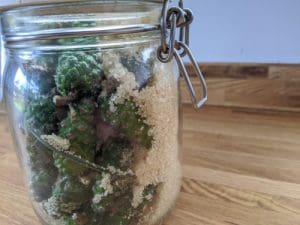
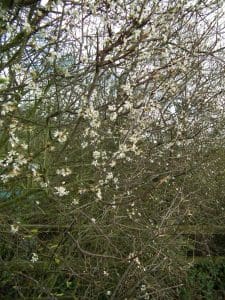
The flowers are edible and like its distant cousins the Cherry and Hawthorn, they taste slightly almondy. But its in autumn that the real payload appears – Blackthorn is also known as Sloe bush, as in delicious sloe gin! The tiny plum shaped sloe berries are incredibly sour and astringent tasting, so although they won’t harm you I wouldn’t recommend eating them raw. Soak them in alcohol instead to get the sweet and fruity flavours activated.
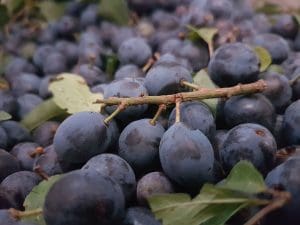
Very similar looking to Blackthorn but less common is the Damson tree – its basically a hybrid of a Blackthorn and a domesticated Plum, so it has bigger and sweeter fruits. These make excellent jam
Yew – Nope! …well, only a tiny bit…
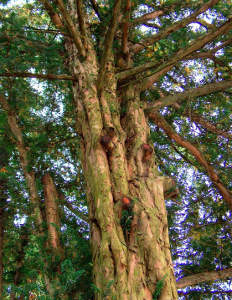
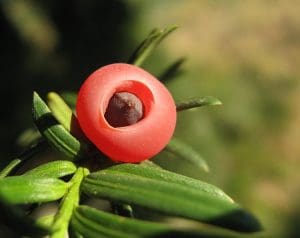
Yew is the tree that we teach beginners to avoid, as almost all of it is very poisonous and it could be confused with many edible conifer species because of its evergreen needle-like leaves. However one of the key ID feature is that unlike the other conifers, it produces little red berries instead of cones. Because they look so gorgeous and tempting, they are a real hazard to small children, and the seed is so poisonous as to be deadly if too many are eaten. But! Here’s an interesting thing that not many people know. The red bit (or aril) on the outside of the seed is actually edible, and quite sweet. You just have to avoid chewing or swallowing the round seed! Because its a tricky one, we would recommend to avoid Yew unless you are really confident, and definitely teach your children not to eat those tempting red berries. At least until they are able to understand the danger difference between the aril and the seed.





